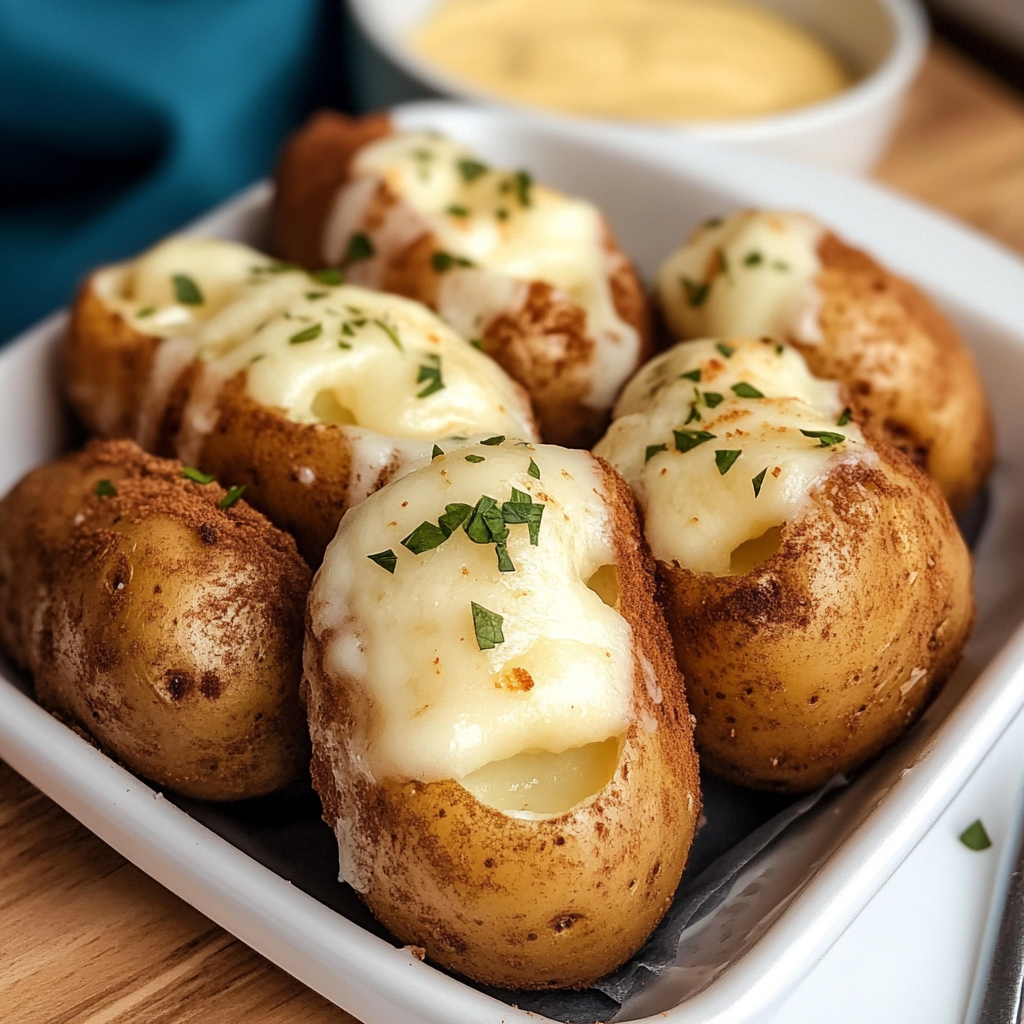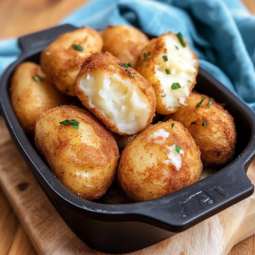Introduction to Irish Potatoes
The term Irish potatoes might sound simple, but it actually refers to two very different things—both rooted in cultural tradition and culinary creativity. In one sense, it’s about the real potatoes that have sustained Ireland for centuries, playing a vital role in the country’s history, agriculture, and cuisine. These starchy vegetables are staples in beloved Irish dishes like colcannon, boxty, and hearty stews.
On the flip side, especially in parts of the United States like Philadelphia, Irish potatoes refer to a sweet, no-bake candy made from cream cheese, coconut, and cinnamon. Despite the name, this dessert contains no actual potatoes—but it’s wildly popular around St. Patrick’s Day.
Whether you’re talking about rustic side dishes or quirky holiday sweets, Irish potatoes offer a fun and flavorful way to celebrate Irish culture, both old and new. In this article, we’ll explore their history, recipes, health facts, and how to make both versions at home.
The Dual Identity of Irish Potatoes
The term Irish potatoes refers to:
- Traditional potatoes grown and eaten widely in Ireland
- A popular Irish-American candy that’s shaped to look like small potatoes but is made of cream cheese, confectioners’ sugar, and coconut
Let’s explore both in depth.
🇮🇪 The Great Irish Potato Famine and Its Legacy
The humble potato wasn’t native to Ireland. It was introduced in the late 1500s and quickly became the country’s staple crop. By the mid-19th century, a devastating event unfolded: the Great Irish Potato Famine. Caused by a fungal disease (Phytophthora infestans), the famine led to mass starvation, death, and emigration. Learn more about this historical crisis from the Encyclopedia Britannica.
The famine left a mark on Irish identity, making potatoes a bittersweet symbol of both sustenance and loss. Today, Irish cuisine still reveres this root vegetable in dishes like colcannon, champ, and boxty.
📜 The History of Irish Potatoes
The story of Irish potatoes is deeply entwined with Ireland’s cultural and agricultural history. Though native to South America, potatoes were introduced to Ireland in the late 1500s and quickly became a staple crop due to their high yield, nutritional value, and ability to thrive in the Irish climate.
By the 1800s, a majority of the Irish population—especially the rural poor—relied heavily on potatoes for survival. This dependence led to catastrophe when a devastating plant disease called late blight (Phytophthora infestans) struck. From 1845 to 1852, the country suffered through the Great Irish Potato Famine, a period of mass starvation, disease, and emigration.
It’s estimated that over one million people died, and another million emigrated, mostly to North America. This tragedy drastically reshaped Ireland’s demographics and left a lasting cultural impact. You can read more about this historical turning point in the Great Irish Potato Famine coverage by Britannica.
Today, potatoes remain a cornerstone of Irish cuisine—both as a symbol of resilience and a beloved comfort food. From humble beginnings to national tragedy and cultural revival, the history of Irish potatoes is a poignant reminder of how food can shape a people.
Nutrition and Benefits of Irish Potatoes
Potatoes are more than just filler—they’re packed with nutrients. A medium potato contains:
- Vitamin C
- Potassium
- Vitamin B6
- Fiber (especially with the skin)
They’re naturally fat-free and gluten-free, making them a great choice for various diets. According to the Harvard T.H. Chan School of Public Health, potatoes are healthiest when baked or boiled—avoid deep-frying for maximum benefits.
🍬 What is Irish Potato Candy?
Here’s where it gets quirky. Despite the name, Irish potato candy contains no actual potatoes. It originated in Philadelphia and is a seasonal treat usually made around St. Patrick’s Day. If you’re into festive treats, these St. Patrick’s Day cookies are another great idea to celebrate the holiday.
Ingredients Typically Include:
- Cream cheese
- Butter
- Confectioners’ sugar
- Shredded coconut
- Vanilla extract
- Cinnamon (for the “dirt” coating)
You’ll find similar ingredients in many cream cheese desserts, including cheesecake bars and carrot cake frostings. The cinnamon coating is what gives the candy its potato-like skin, much like the flavor base of these homemade cinnamon-flavored desserts.

Types of Irish Potatoes (Fresh Produce)
When most people think of Irish potatoes, they picture the classic white or yellow-fleshed varieties used in traditional dishes. Ireland is home to several popular potato cultivars, each prized for its texture, flavor, and culinary versatility.
Some of the most common types include:
- Kerr’s Pink – A floury potato with a pinkish hue and rich flavor, ideal for mashing or boiling.
- Rooster – One of Ireland’s most beloved all-rounders, with red skin and a golden center that’s perfect for roasting, baking, or steaming.
- Maris Piper – Known for its light, fluffy texture and often used for chips (fries) and roast potatoes.
These potato varieties are typically planted in spring and harvested between late summer and early autumn. Their quality and taste have made them central to many classic Irish recipes, and they remain a point of national pride, both on Irish dinner tables and in international exports.
Irish Potato Dishes in Traditional Cuisine
Potatoes are the heart and soul of traditional Irish cooking, appearing in nearly every meal. Their versatility, affordability, and comforting flavor have made them a staple for generations.
Here are some iconic Irish potato dishes still enjoyed today:
- Colcannon – A creamy mash of potatoes, butter, and cabbage or kale, often served with sausages or boiled ham.
- Champ – Similar to colcannon but made with scallions (green onions) instead of greens, and finished with a well of melted butter.
- Boxty – A traditional potato pancake made from both grated raw and mashed potatoes, pan-fried until golden.
- Irish potato casserole – A layered dish of grated or sliced potatoes, cream, onions, and sometimes cheese, baked until bubbly and crisp.
These dishes embody the rustic charm of Irish cuisine—simple, nourishing, and deeply satisfying. Whether served as a side or main, they remain treasured comfort foods across Ireland and beyond.
👩🍳 Recipe 1: Traditional Irish Potato Casserole
This rich and creamy dish is a crowd-pleaser during holidays and family dinners.
Ingredients:
- 8 large russet potatoes
- ½ small onion, minced
- ½ cup butter, melted
- ½ cup heavy cream
- ½ cup half-and-half
- Salt, pepper, paprika (to taste)
- Chopped parsley for garnish
Instructions:
- Boil potatoes for 10 minutes. Drain and cool.
- Peel and refrigerate until cold.
- Preheat oven to 350°F (175°C).
- Grate potatoes into a greased 9×13-inch dish.
- Layer with onion, salt, and pepper.
- Pour cream and butter over the top.
- Sprinkle with paprika.
- Bake for 30–35 minutes until bubbling.
- Garnish with parsley and serve hot.
🍭 Recipe 2: Irish Potato Candy
This is a fun, no-bake dessert that’s easy to make and perfect for parties.
Ingredients:
- 4 oz cream cheese
- ¼ cup butter
- 4 cups confectioners’ sugar
- 1 tsp vanilla
- 2½ cups shredded coconut
- 1 tbsp ground cinnamon
Instructions:
- Beat cream cheese and butter until smooth.
- Add sugar and vanilla, mix well.
- Fold in coconut.
- Roll into small potato-like ovals.
- Roll each “potato” in cinnamon.
- Chill for 30 minutes before serving.
💡 Optional: Add cocoa powder to the cinnamon for a darker, earthier “potato skin.”

Irish potatoes
Ingredients
- – 4 oz cream cheese softened
- – ¼ cup butter softened
- – 4 cups confectioners’ sugar
- – 1 tsp vanilla extract
- – 2½ cups shredded coconut
- – 1 tbsp ground cinnamon
Instructions
- Beat cream cheese and butter until smooth.
- Add sugar and vanilla; mix well.
- Fold in coconut.
- Roll into small oval shapes.
- Roll in cinnamon.
- Chill 30 minutes before serving.
Notes
Common Mistakes & Cooking Tips
When cooking or baking with Irish potatoes (real or candy), keep these tips in mind:
- For candy:
- Chill mixture before rolling to avoid stickiness
- Don’t overdo the cinnamon—mix with cocoa if too strong
- For casseroles:
- Season every layer for balanced flavor
- Use real cream and butter for best results
- Avoid overcooking or undercooking the potatoes
❓ FAQs About Irish Potatoes
Are Irish potatoes from Ireland?
Yes and no. The vegetable is associated with Ireland, but the candy originated in the U.S.
What are Irish potatoes made of?
The candy is made from cream cheese, coconut, sugar, and cinnamon. The vegetable is usually a starchy type like russet or Rooster.
Why are they called Irish potatoes?
The candy mimics the look of a dirt-covered baby potato and is tied to Irish-American traditions around St. Patrick’s Day.
Can you freeze Irish potato candy?
It’s best enjoyed fresh, but you can freeze it in an airtight container for up to a month.
Can you freeze Irish potato casserole?
Yes! Let it cool, then store in freezer-safe containers. Reheat covered at 350°F.
What’s the difference between Irish potatoes and regular potatoes?
Irish potatoes usually refer to white or russet potatoes. The term is used to distinguish them from sweet potatoes.
Fun Facts & Trivia
- Irish potato candy is mostly a Philadelphia thing. Locals eat thousands each March.
- The candy is often shaped like large marbles—cute, quirky, and kid-approved.
- Some people use ground nuts or graham cracker crumbs instead of coconut for texture variation.
🔍 Final Thoughts
From famine-era staple to festive treat, Irish potatoes have earned their place in both culinary and cultural history. Give both versions a try—you’ll find there’s more to this starchy term than meets the eye.
Whether you’re enjoying a creamy Irish potato casserole or rolling cinnamon-dusted candies with your kids, Irish potatoes bring rich flavor and cultural flair to the table. They’re a symbol of survival, celebration, and good old-fashioned comfort food.



